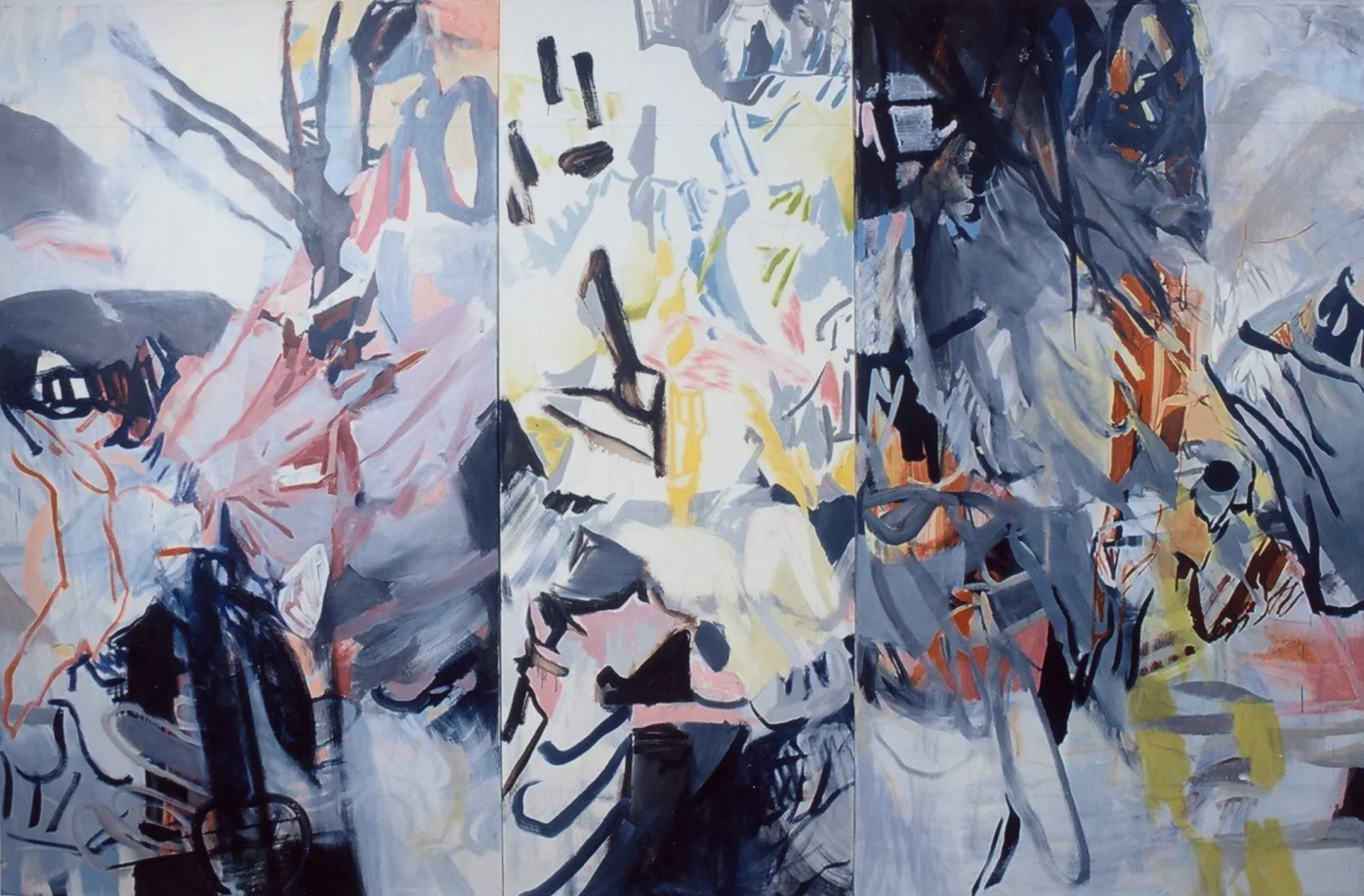Jackie Saccoccio: In Transparency
Image: Jackie Saccoccio, In Transparency, oil on canvas, 2004-2006 / ©Jackie Saccoccio
Press Release / November 30 - December 30, 2006
Black & White Gallery // Chelsea is very pleased to present “In Transparency” by Jackie Saccoccio. Jackie Saccoccio’s latest paintings are ferocious. Her virtuosic handling of line, shape, light, and space, and her recent turn to intense, often acidic color, confront us with a remarkably wide range of shifting, complicated visual relationships, especially in multi-part works like =3, 2006. Beyond the formal and conceptual complexity internal to individual works, Saccoccio’s art engages diverse and challenging artistic precedents, from the Roman Baroque (Annibale Carracci’s ceiling frescoes in the Farnese Palace, Francesco Borromini’s Oratorio dei Filippini) to contemporary abstraction (Elizabeth Murray’s constructed canvases). In these new works, the exuberance of transforming matter into translucency — or painting “in transparency,” as Saccoccio puts it, in language borrowed from Jean-Paul Sartre — is bodied forth alongside the possibility of its occlusion or collapse into darkness. But here occlusion, too, can be a source of pleasure for eye and mind, as in the appearance of the vibrant, high-key color of Symphony No. 3 in E flat major for S. B. (2006) on top of a black-and-white wall drawing, or in the comic scotoma of Blackish Hole (2006).
Saccoccio’s work in recent years has explored how masses, volumes, and surfaces seen in the world (rock formations, building facades, brambles and woodland undergrowth, stones held in a hand) can be dissolved, in painting, into areas of nearly translucent color and shapes alternately defined and distorted by line. In making the earlier works in this exhibition she often turned to photographs and projections of photographs of large rock formations and tangled plants — the rock formations evoking the sublime or transcendental landscapes of 19th-century art, the brambles and undergrowth associated with the entanglements and contingencies of everyday life in the present — to produce abstract paintings that offer experiences of perceptual and cognitive complexity thickened with bodily pleasure. Densely layered and loaded with spatial ambiguity, these works provide glimpses of illusionism in areas that, for a moment, may seem to have been structured by one-point perspective. By turns luscious and toughminded, the color and facture of Maelstrom (2004) are characteristic of the major paintings Saccoccio completed in New York and Connecticut in the period before her departure for a year-long stay in Europe in 2004- 2005.
In Giverny in summer 2004, Saccoccio launched a series of drawings connected to the visual scrutiny of stones held in her right hand as she drew with her left, a procedure that transformed her practice of drawing and led, during her time in Rome the following winter and spring, to the production of large-scale, site-specific wall drawings like the one made for this exhibition, in which as a rule lines do not cross. Brushed in India ink on ordinary white painted walls, the drawings set up relationships among bounded and unbounded graphic forms that alter our experience of architectural space. As interventions in architecture and as drawings in their own right (Corvac, 2005), Saccoccio’s recent drawings offer tactile associations keyed to a wide range of bodily and psychic experiences — some call to mind the anthropomorphism of Courbet’s late landscapes, while others seem to flirt with the intelligence and the would-be sexual allusions at play in Dr. Seuss.
Jackie Saccoccio holds a BFA in Painting degree from Rhode Island School of Design and an MFA degree in Painting from School of the Art Institute of Chicago. She is a recipient of the Rome Prize from American Academy in Rome, Italy, Artist Residency Grant from Claude Monet Foundation / Art Production Fund, Giverny, France, John Simon Guggenheim Foundation Grant and Fulbright-Hays Foundation Grant/ Miguel Vinciguerra Award, Italy.

